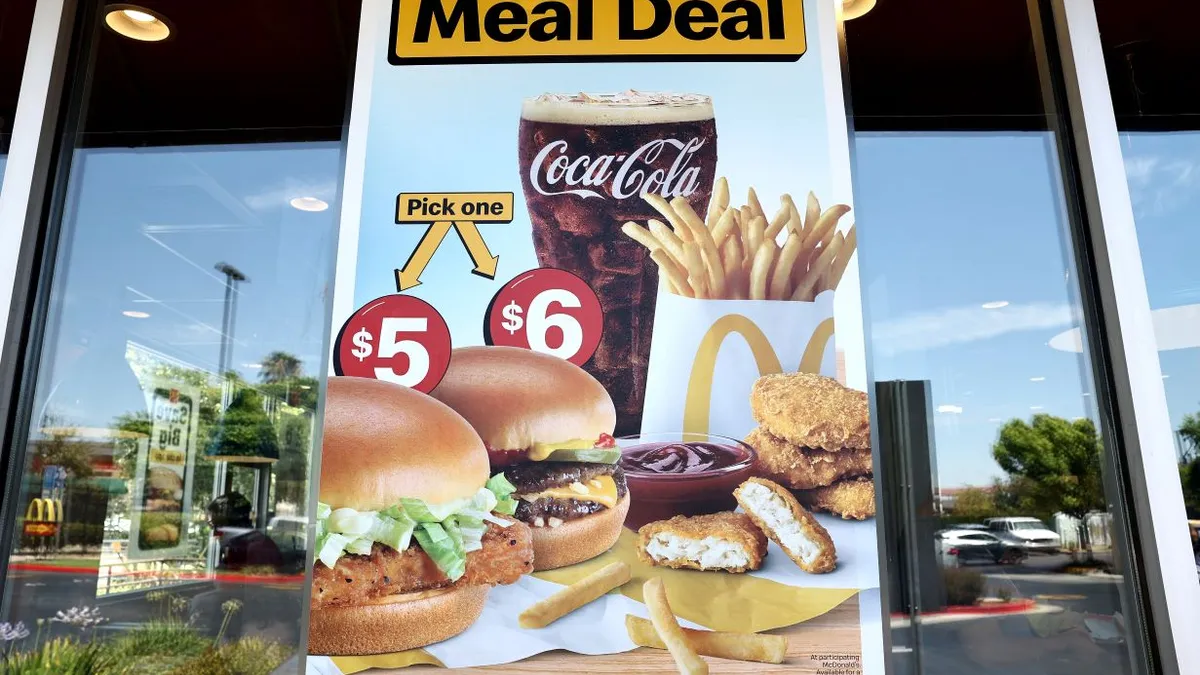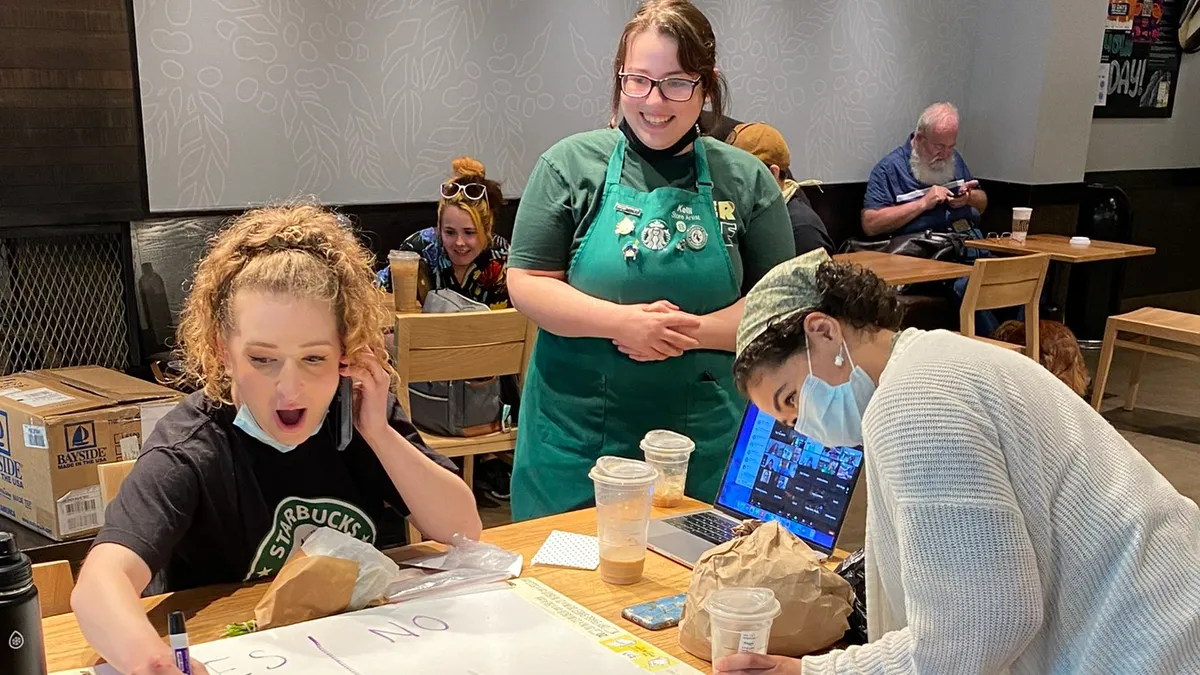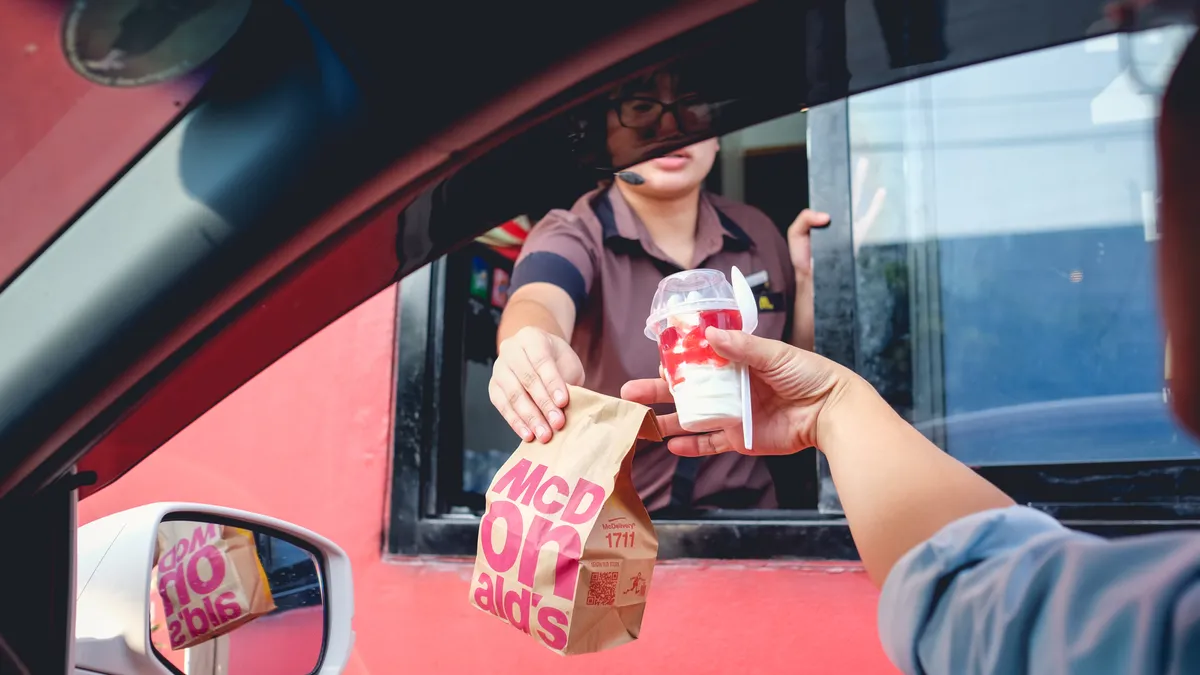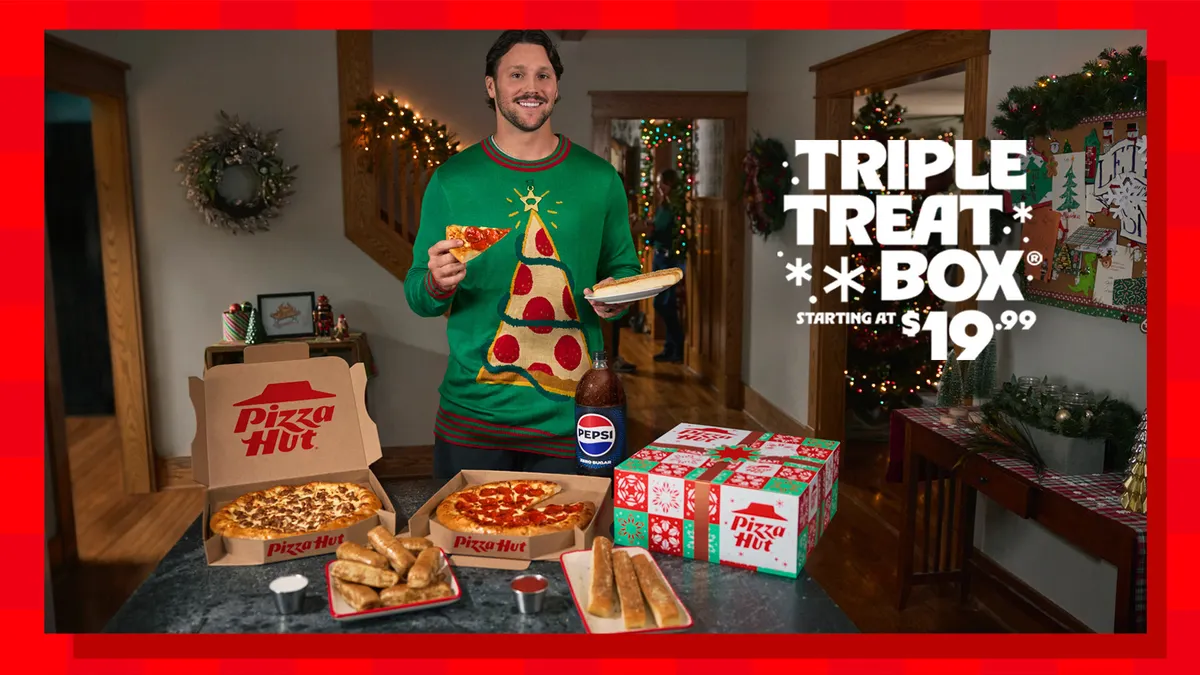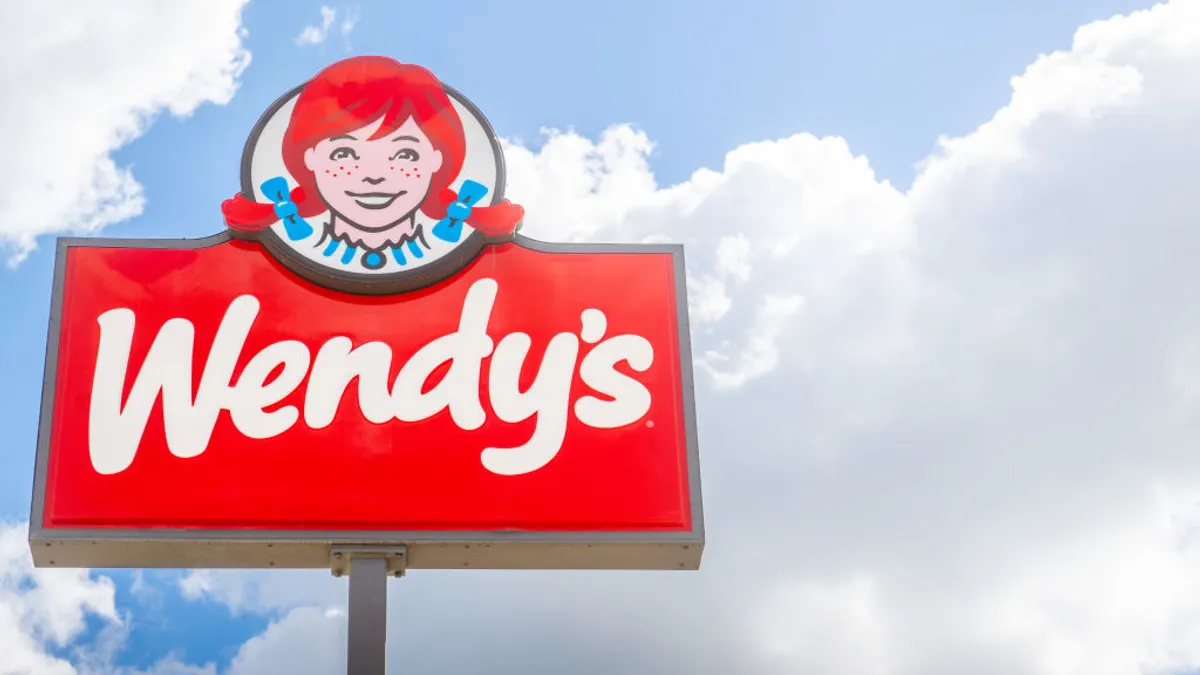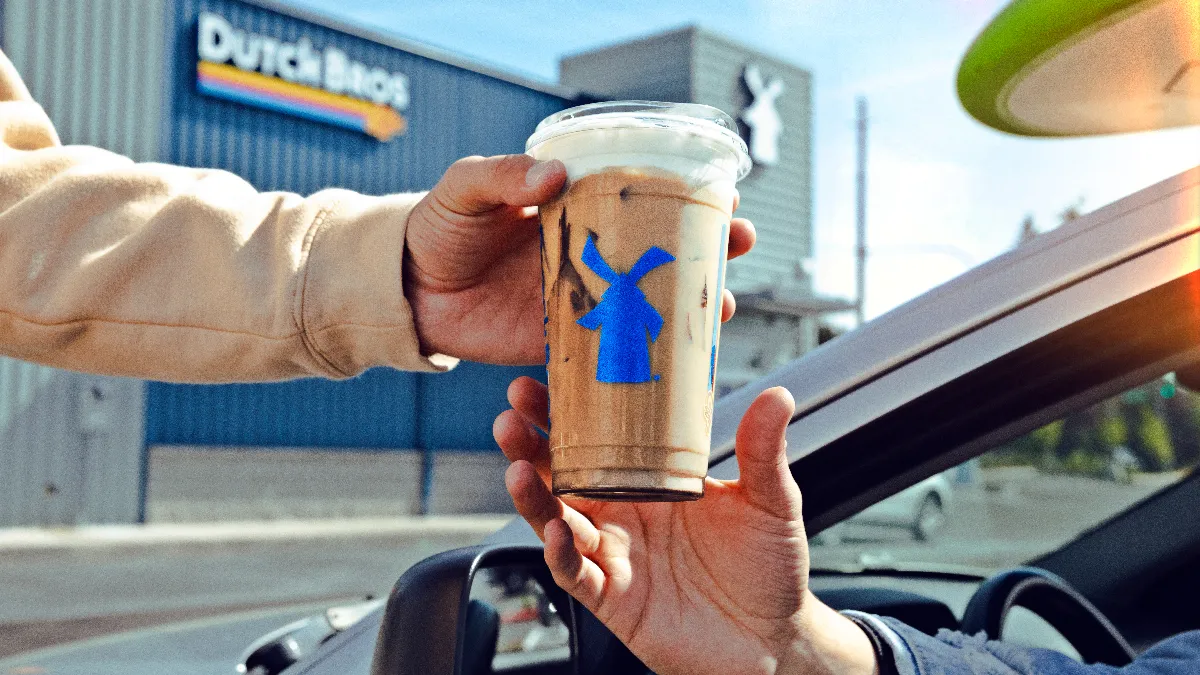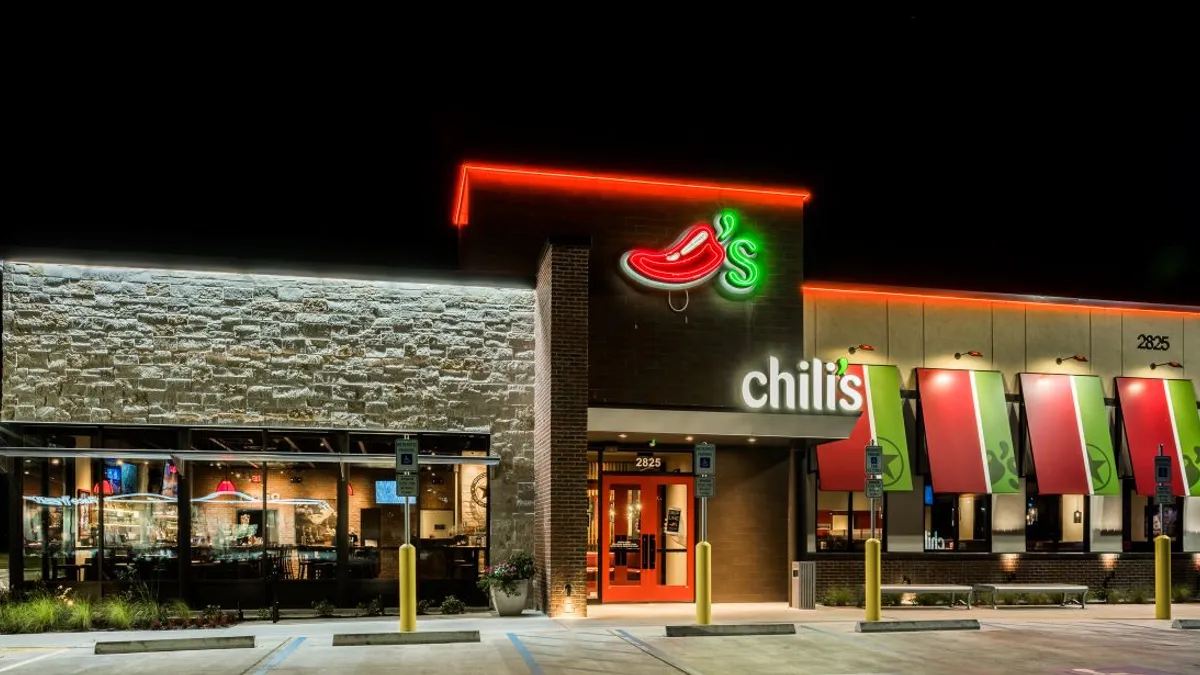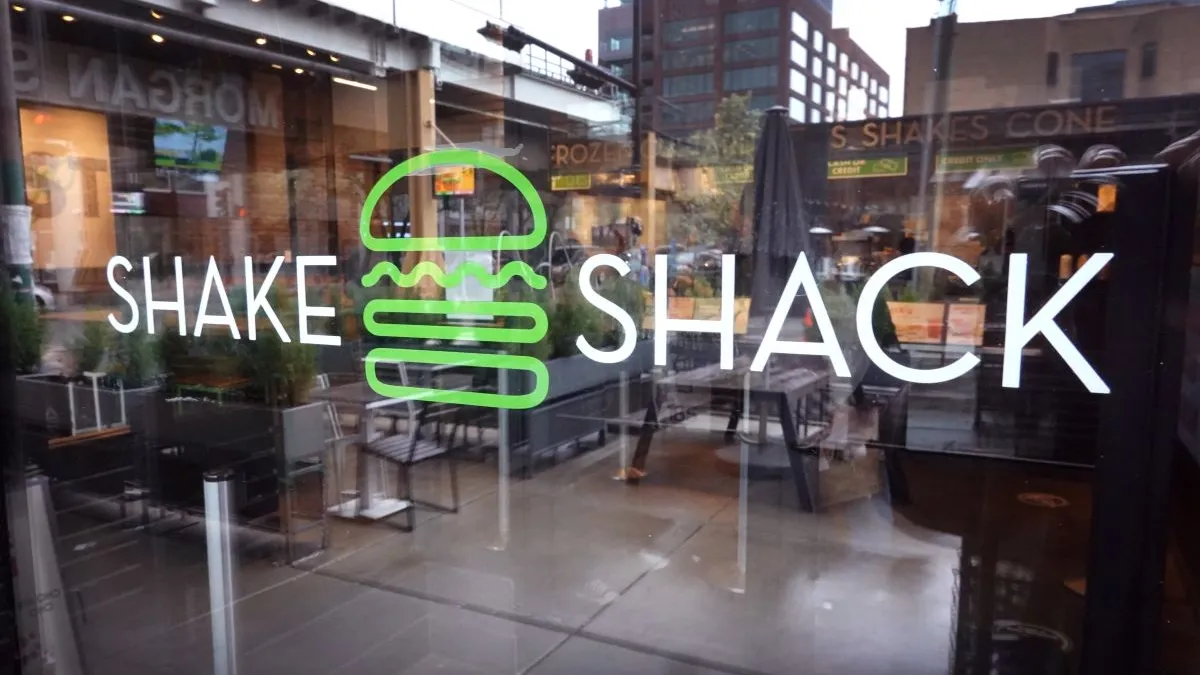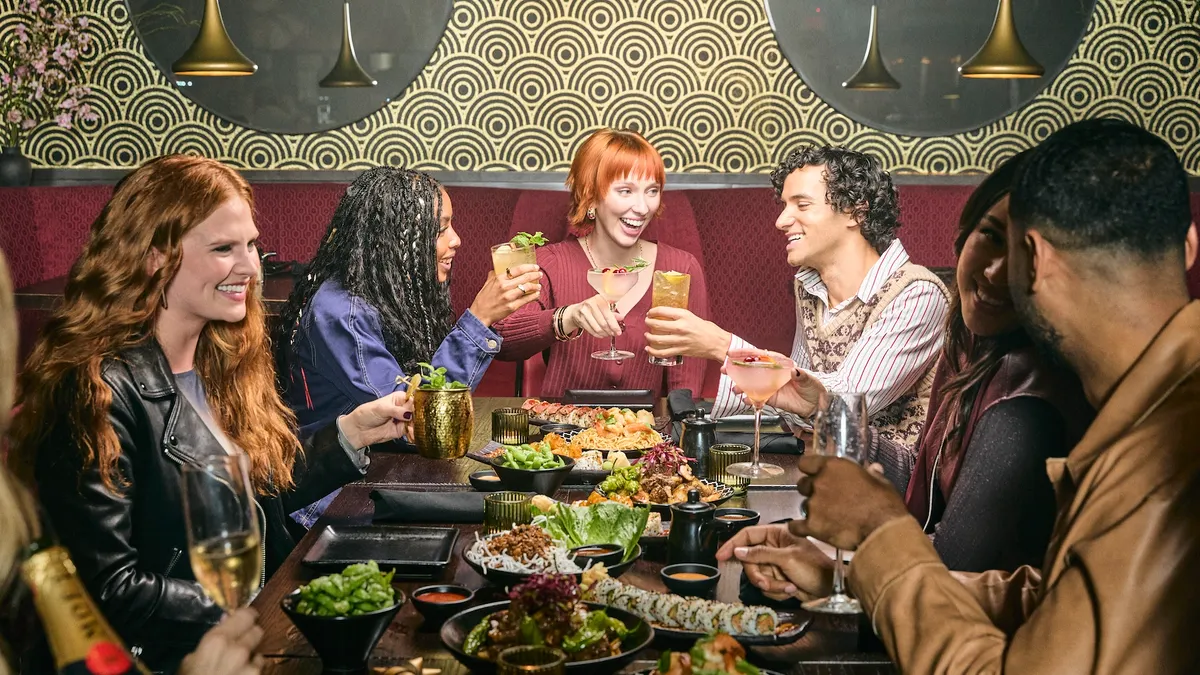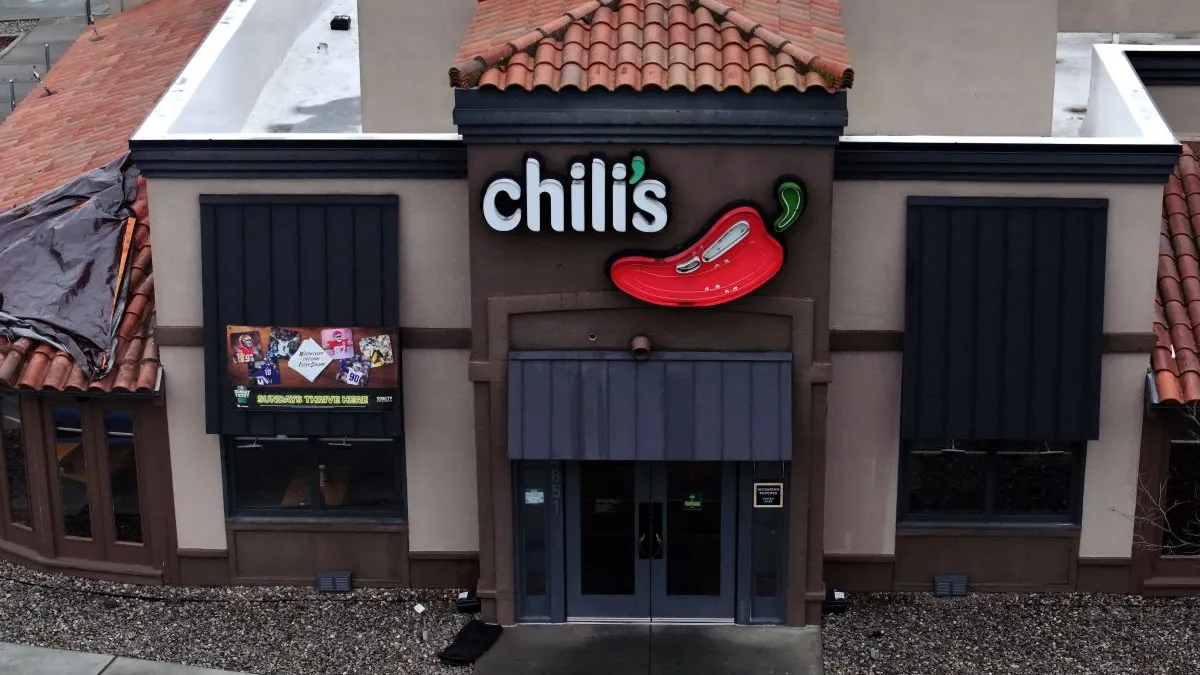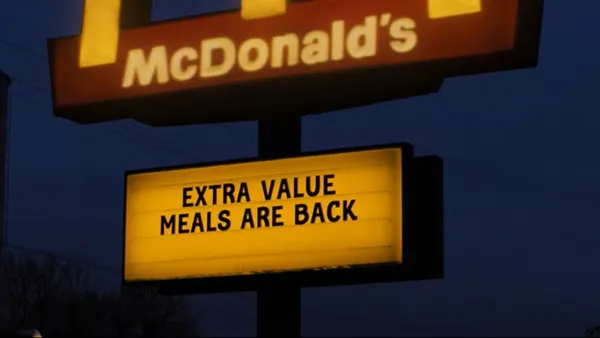CHICAGO — If diners are feeling the pinch of tariffs recently implemented by the Trump Administration, their economic sensitivity isn’t showing up in restaurant traffic data — yet. At least that’s what David Portalatin, Circana’s senior vice president and industry advisor food and foodservice, said at the National Restaurant Association show this week.
“We're watching this very carefully every single week, just as everyone else is at present,” Portalatin said. “We're unable to point to any specific tariff-related impact.”
Portalatin was one of a number of restaurant analysts and executives who told Restaurant Dive that despite traffic declines in Q1 2025, the ripple effect of current tariffs is not yet clear.
Traffic is down, but not by much
Tariffs aside, restaurants are still suffering from the same headwinds — input inflation and consumer resistance to pricing — that have eroded visits in recent years.
Victor Fernandez, chief insights officer at Black Box Intelligence, said that measures of consumer sentiment are the lowest they’ve been in years, but that this sour outlook isn’t dragging traffic.
Portalatin said anemic traffic over the past few months is a continuation of longer trends.
“If we looked at the last four weeks of restaurant traffic, it's relatively about the same trend that we've observed over the last 52 weeks,” Portalatin said. “Minus two.”
Fernadez said the industry has lost some traffic share to grocery over the last 18 months. Consumer pullback overall has continued resulting in negative year-over-year traffic, he said. But visits have improved somewhat in recent weeks — April was the second strongest month so far in 2025, Fernandez said.
Portalatin said projections give some reason for optimism in the back half of the year.
“Our forecast actually calls for modest traffic growth by the time we end 2025, so a lot of that is going to come in Q3 and Q4,” Portalatin said.
The two most important economic predictors of restaurant traffic are low unemployment and growing disposable income, according to Portalatin. Disposable personal income, according to the Bureau of Economic Analysis, was still growing as of March, the latest month for which data is available. Meanwhile, according to the Bureau of Labor Statistics, unemployment hit 4.2% in April — up slightly from a year ago but still fairly low.
If those two key measures don’t change significantly, restaurant traffic is unlikely to budge much up or down.
Tickets take a hit
Bryan Solar, the chief product officer at SpotOn, said many of his firm’s restaurant clients are watching consumer behavior with baited breath. Shifts in discretionary spending or trade down to less expensive categories could significantly hurt restaurants.
Kevin Bryla, chief marketing officer for payment technology company SpotOn, said restaurants are seeing a modest decrease in check size.
“You're seeing the check size go down a little bit. We've been fortunate on our side, we're seeing resilience, but [for] how long, right? That pressure will continue to push down,” Bryla said.
Fernandez said Black Box is seeing various consumer demographics move in different directions. Lower-income consumers are staying home to eat, and higher-income consumers are going out. Those in the middle, Fernandez said, are still dining at restaurants but are actively trying to spend less.
Most companies Black Box surveys are seeing guests opt for value menus, but that’s far from the only form of diners’ check management. Guests are skipping alcohol, passing on dessert and sharing entrees. These behaviors leave behind clear indicators in data, Fernandez said, and Black Box is seeing check growth lag behind rising menu prices, indicating an active effort by consumers to avoid more expensive items.
On the whole, Fernandez said, Black Box is projecting a gloomier 2025 than 2024 or than analysts expected at the start of the year, but not much gloomier.
“We do think there's going to be a slowdown. We think it's going to be a little slower than it was last year from a sales and traffic perspective,” Fernandez said. “But right now, I don't think it's going to launch into a recession.”
The effects are uneven
QSRs have seen their same-store sales growth erode as their perceived price advantage relative to fast casual has vanished, Portalatin said.
“There are a lot of operators that are growing, that are performing really well, particularly the fast casual segment, [where] customer traffic is up roughly 5%,” Portalatin said. Even if fast casual restaurants remain somewhat pricier than QSRs, they offer a better perceived experience and quality, he said.
“When the consumer is really value oriented in terms of price, you can't beat what's in my pantry, refrigerator or freezer,” Portalatin said. “Once I've decided to come to the restaurant industry, I'm looking for a more premium, differentiated experience at a valuable price point.”
Portalatin said some casual dining chains have cracked this code, too — Chili’s eye-popping 21% traffic surge springs to mind. Fernandez said a fairly large number of casual dining players are doing well.
“About a third of companies in casual dining are seeing positive comp sales, where the rest are not,” Fernandez said. Some of that has to do with casual chains making a compelling case for value, as QSR prices have risen.
“We think there's even trading up, in some cases,” Fernandez said. “Some people that normally would have gone for a quick-service occasion now are trading up to some of those higher segments.”
Tony Smith, CEO of foodservice software company Restaurant 365, said that QSRs will be able to draw more customers if they use value menus to demonstrate a clear edge in price relative to more expensive segments.
“I do think there's going to be a number of consumers where price is going to be a driver,” Smith said.
Smith said he’s keeping an eye on several trends that could, if they worsen, act as recession indicators: credit card spending, same-store sales and the rate of unit closures.



